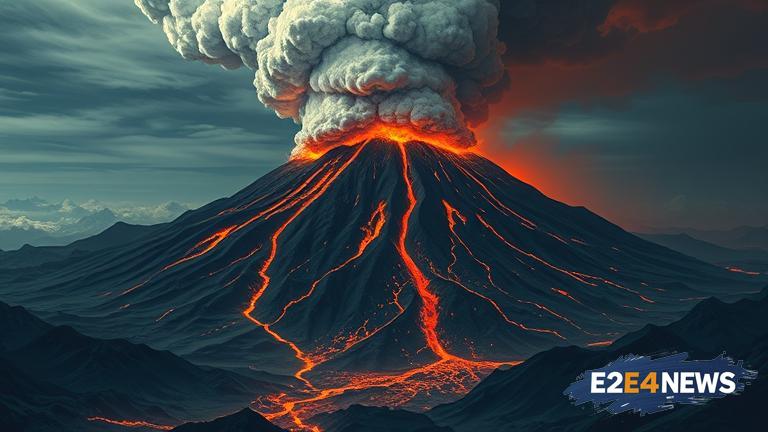Volcanic eruptions have been a part of the Earth’s geological history, with some of the most catastrophic events occurring in the past few centuries. One of the worst eruptions in history was the 1815 eruption of Mount Tambora in Indonesia, which caused the ‘Year Without a Summer’ in 1816 due to the massive amounts of ash and sulfur dioxide released into the atmosphere. The eruption is believed to have killed over 71,000 people directly and indirectly. Another notable eruption was the 1883 eruption of Krakatoa, also in Indonesia, which was so powerful that it could be heard and felt thousands of miles away. The eruption caused a tsunami that killed over 36,000 people and was heard over 3,000 miles away. The 1980 eruption of Mount St. Helens in the United States was another significant event, which caused widespread destruction and loss of life. The eruption was so powerful that it blew off the top of the mountain, reducing its height by over 800 feet. The 1985 eruption of Nevado del Ruiz in Colombia was another devastating event, which caused a massive mudflow that killed over 23,000 people. The eruption was triggered by the melting of ice and snow on the mountain, which caused a massive amount of water to flow down the mountain, picking up ash, mud, and debris along the way. The 2010 eruption of Eyjafjallajokull in Iceland was another significant event, which caused widespread disruption to air travel across Europe. The eruption was so powerful that it released massive amounts of ash into the atmosphere, which caused the closure of airports and airspace across the continent. Volcanic eruptions can have a significant impact on the environment and human populations, causing widespread destruction and loss of life. They can also have a significant impact on the global climate, with some eruptions causing a cooling effect on the planet. The study of volcanic eruptions is an important field of research, with scientists working to understand the causes and effects of these events. By studying volcanic eruptions, scientists can gain a better understanding of the Earth’s geological history and the processes that shape our planet. Volcanic eruptions can also have a significant impact on the economy, with some eruptions causing widespread disruption to trade and commerce. The impact of volcanic eruptions can be felt for years after the event, with some eruptions causing long-term damage to the environment and human populations. In addition to the immediate effects of volcanic eruptions, they can also have long-term effects on the environment and human populations. For example, the 1815 eruption of Mount Tambora caused a famine in the Netherlands, which lasted for several years after the event. The eruption also caused a significant increase in the price of food, which had a major impact on the economy. The study of volcanic eruptions is a complex and multidisciplinary field, which requires the collaboration of scientists from a range of disciplines. By working together, scientists can gain a better understanding of volcanic eruptions and their impact on the environment and human populations. The development of new technologies and techniques has improved our ability to study and predict volcanic eruptions, which has helped to reduce the risk of these events. However, there is still much to be learned about volcanic eruptions, and scientists continue to work to improve our understanding of these complex and powerful events. In conclusion, volcanic eruptions are a significant and powerful force that can have a major impact on the environment and human populations. By studying these events, scientists can gain a better understanding of the Earth’s geological history and the processes that shape our planet.





